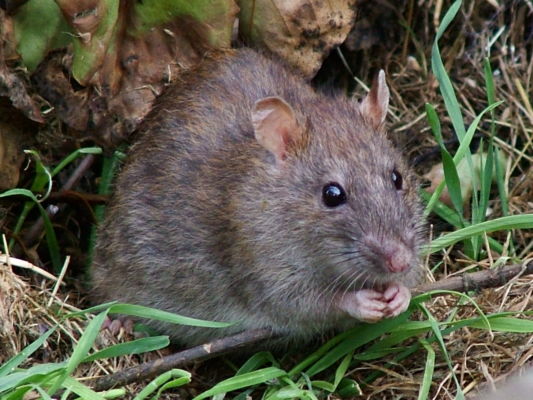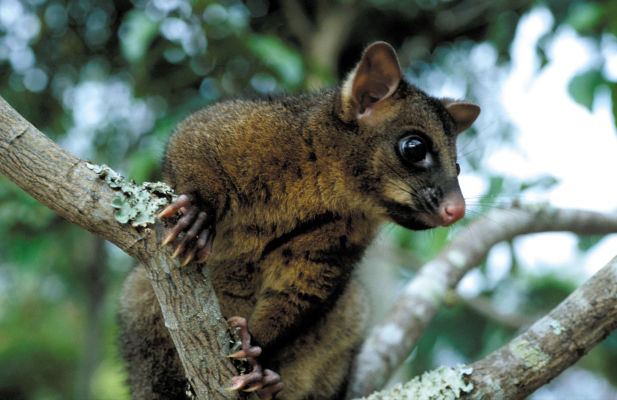A predator-free New Zealand is going to require landscape scale removal of possums, rats, ferrets, stoats and weasels – and possibly other species such as mice and feral cats as well. The problem – or at least one of the problems – is how do you humanely remove some species without endangering others that share that landscape; including people, livestock and the wildlife we’re trying to save?
Traps, if well designed and used correctly, will keep out (most) non-target wildlife and kill instantly and humanely, but deployment on a landscape scale can be difficult and expensive. Deployment of toxins over the landscape is a lot easier – particularly if applied aerially – but it is currently a lot less specific in its targeting and, in the case of products such as brodifacoum, can hang around in the environment long after the target predators have been removed. No-one wants toxins in the foodchain.
So wouldn’t it be great if there was a humane, quick-killing toxin that only killed one target species – a poison just for rats; another just for possums…

Finding such toxins is the subject of a 10-year research project by Landcare Research scientists Brian Hopkins, Dan White and colleagues. So far they have succeeded in identifying a rat-selective toxin and they have now teamed up with William McCook from pest control product manufacturer, Orillion, to develop the product further through field testing and commercialisation.
Landcare Research also reports that the team have recently been awarded Ministry of Business, Innovation and Employment (MBIE) Smart Idea funding to extend their study to develop similar products for other pest species. It’s great news – but there is still much to be done before species-specific bait blocks start appearing on hardware store shelves.
For example, the rat-specific toxin currently being developed is much better at killing Norway rats, than their relatives, ship rats. It is, perhaps, just a little too species specific.
“Although highly effective (100%) against Norway rats, the toxin is somewhat less effective (60–80%) against ship rats. To be of greatest value (to a predator free New Zealand), ship rats need to be targeted at the same high efficacy as Norway rats. In collaboration with a commercial partner, Orillion, work is therefore ongoing to optimise the bait formulation such that ship rats are killed to the same level as Norway rats so that both species can be targeted with a single bait product.”
Other countries have shown interest in developing a similar product for their problem rat species.
“Funding has recently been obtained from the Department of Conservation (DOC) to support this work. The team is also working with other partners to test this new toxin against other key rat species of South East Asia that are harmful to agriculture and conservation values, and to identify industry partners that could help support full product registration.”
Finding host-specific toxins for other key species is the next big challenge for the research team, and the subject of their Ministry of Business, Innovation and Employment (MBIE) Smart Idea funding. No-one says, however, that it’s going to be easy…
“This work is novel and highly speculative, and carries a high degree of risk of failure. It focuses on using genome-mining technologies to identify specific genes suitable for use in the development of species-selective toxins – targeting a pest’s ‘Achilles heel’.”
So what exactly is genome-mining?
“The theory is based on the practice of the pharmaceutical industry, which employs genome mining to discover targets for therapeutic intervention, and it has been used to develop more specific and safer control tools for invertebrates.”
Possums are the next pest species in the genome-mining teams sights.
“Genome mining was initially targeted at possums because they are one of the predators highlighted for eradication by PFNZ. In addition, the control of possums is needed to protect New Zealand’s iconic biodiversity and to achieve and maintain the TB-free status of its livestock.”

To carry out a genome-mining investigation of an animal, you first need to know what its genome (its DNA makeup) is and how those genes are expressed. The DNA needs to be sequenced and the genes mapped. Then unique aspects of that genetic makeup, specific to the species, need to be identified for targeting. But because brushtail possums are only a pest in New Zealand, the international scientific community hasn’t been much interested in possums to date. Thus the possum has yet to have its DNA sequenced and its genome mapped.
“The sequence of the possum genome is not available, but Brian’s team postulated that they could use related marsupial genomes (American opossum and wallaby) as surrogates for the possum’s, ensuring that any toxins developed would be marsupial-selective. Targeting other marsupial genomes is not believed to be an issue in New Zealand because the possum is the predominant marsupial here. (The only other marsupials are five introduced species of wallaby, which are also pests.)”
So what is known about other marsupial genomes? What is different and unique to marsupial genes that could potentially be targeted by a marsupial-specific toxin?
“Genome alignments have been carried out on a variety of opossum and wallaby receptor gene families and 85 receptors were identified that were highly preserved in their DNA sequence between the two marsupial species. Using novel algorithms, the possum sequences of these receptors were predicted and aligned with the DNA sequences of the same receptors in non-target species (human), and 14 were found to be significantly different in the possum.”
So that’s 14 potential DNA sequences to target that are found in possums but not humans. What happens next?
“Based on a literature review, three receptors have been prioritised as suitable targets for toxin design and are now awaiting validation in cell-based gene-knockout assays to assess for specific markers of biological relevance (e.g. cell death). Receptors where markers of biological relevance are confirmed when knocked out will be used to develop assays suitable for rapidly screening large numbers of compounds to identify suitable candidates that can be developed into possum-selective toxins.”
An article based on this research has been published in Landcare Research’s latest edition of its vertebrate pest research newsletter ‘Kararehe Kino’ and can be read online at:
Published research on rat-specific toxins, co-authored by Brian Hopkins includes the following article: (Abstract only is freely available, full article access can be purchased)
Fatty Acid-Derived Pro-Toxicants of the Rat Selective Toxicant Norbormide (2016)

